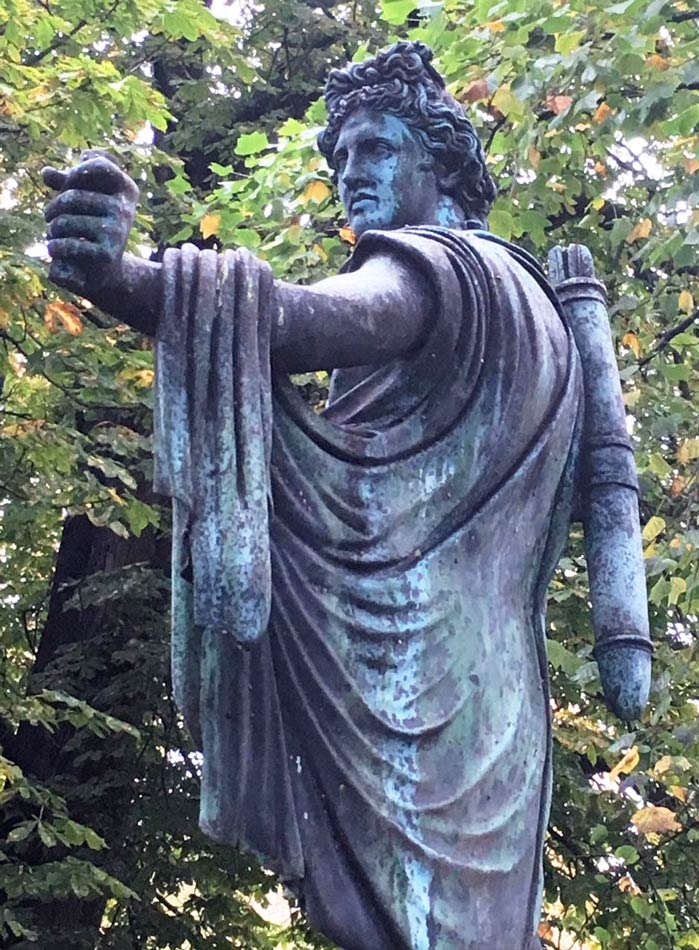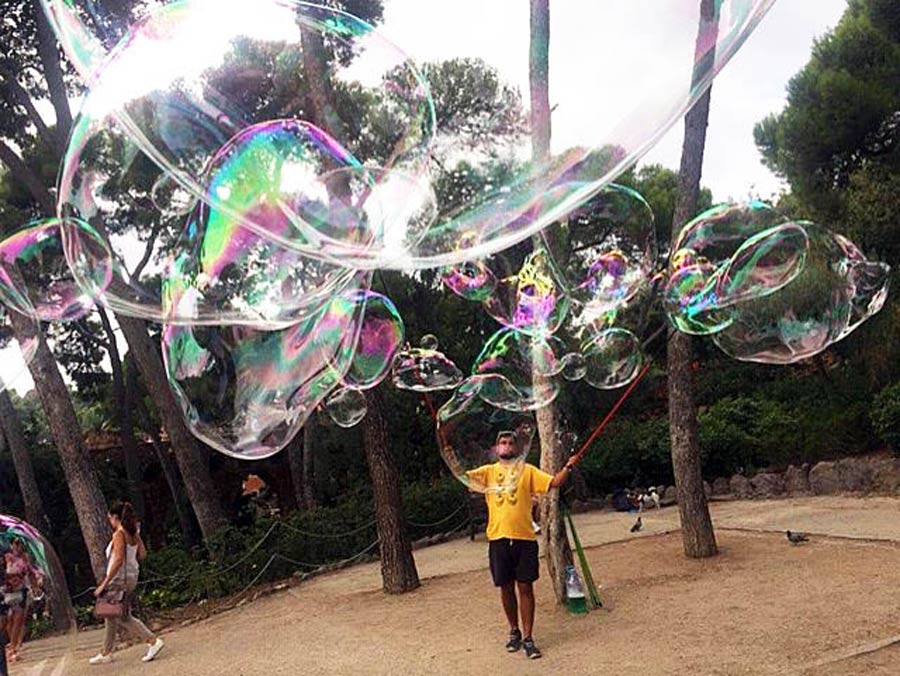SYNCHRONICITY ITSELF
Chapter 2
Forms of Expression
While synchronicity can appear in an infinite number of ways depending on the individual, there are some general forms that it tends to take, and this allows us to create some groupings for better understanding it. In the early 1990s, British researcher, Jane Henry, conducted an extensive study based on a survey-questionnaire to discover the different ways that people experience coincidences. While Henry’s study is designated as a coincidence study and not a synchronicity study per se, Henry prefaced her report with a definiton of coincidence that closely resembles Jung’s idea of synchronicity. She asserts, “A coincidence experience may be defined as the ‘occurrence of two (or more) odd, surprising, out-of-the-ordinary or personally meaningful events connected in the mind of the observer.'” After combing over 1,000 questionnaires, Henry found that coincidences are typically experienced in the following ways:
- Spontaneous associations (reported by 75%)—thinking of someone before they call, etc.
- Small world encounters (66%)—highly improbably meetings with people
- Cluster experiences (50%)—recurrence of a name, number, or theme
- Paranormal encounters (40%)—includes telepathy
- Helpful or hidden hands (40%)—the sense that events are being guided
- Library angel (33%)—books or information appearing mysteriously
- Guardian angel (30%)—the sense of being protected by unseen forces
- Prayers answered (30%)
- Recovery of lost property (29%)
- Psychokinesis (25%)—moving objects through mental effort
- Other (16%)—omens, warnings, and fortuitous accidents
[Since Henry's survey-questionnaire appeared in a newspaper and most likely attracted respondents who were already curious about coincidences, these results should be regarded more as a general guideline than an unbiased polling of the population]

Graffiti detail―Zürich, Switzerland
Parapsychological Forms
As Rhine and Pratt (1956) explain, to call a phenomenon parapsychological means that it “…has been shown by experimental investigation to be unexplainable wholly in terms of physical principles…” and requires, “…a mode of perception that is independent of the senses.” These kinds of events include telepathy (mind-to-mind communications), precognition (the act of seeing future events as with dream premonitions), clairvoyance (to see or sense an event at a distance of space or time), déjà vu (the uncanny feeling of having experienced something before), and psychokinesis (to demonstrate mind over matter, as with bending a spoon with the mind). Jung (1960), Bolen (1979), Von Franz (1988), and Progoff (1973) agree that these types of events, which are generally referred to as psi phenomena, fall within the synchroni ity family because they involve an inner-outer connection and because their occurrence is inexplicable. In fact, most synchronistic experiences involve a parapsychological component of some kind. For insstance, when an individual has a dream that predicts some future event in life, the occurrence is indicative of precognition. Likewise, when an individual suddenly feels that a loved one has been injured at the very moment that they’ve suffered a car accident, it suggests that some form of telepathic communication has occurred between them. But should psy-shenomenon be regarded as meaningful? For example, should the act of bending a spoon through mind-power be regarded as a meaningful experience? Perhads not, although it could be argued that the experience gathers meaning through its inexplicability.
This becomes less of an issue with everyday synchronicity since most of these occurrences involve a meaningful and self-evident connection to an aspect of the observer’s life. But, even without these types of personal connections, it’s hard to imagine that a person could experience psychokinesis or otherwise and render it meaningless. Perhaps a gifted test subject could perhaps grow so accustomed to performing a task that it becomes meaningless to them—but other than that, synchronistic experiences involving psi tend to leave an indelible impression on the observer and may even prompt them to rethink what is humanly possible.
Repetitive Forms
Synchronicity can involve encountering a name, number, object, or idea, over and over again within a short time span (called as cluster experiences in the Henry study). As a case example: a male graduate student once had the uncanny sense that he was surrounded by the number thirteen. According to the student, the number kept popping up on store receipts, parking garage tickets, and even books would fall open to page thirteen. The young man did not regard the pattern as an omen of bad luck—he simply had the sense that the number was following him. He tried to ignore it and dismiss it as nothing for a while, but then, as he explains:
“I was riding the bus one day, just like any other day, and when I looked up, I noticed I was on bus #13. So of course, I was immediately reminded of my number series. I looked around, and I noticed that a digital counter of some kind above the bus driver was stuck on thirteen. I then took a quick head count of passengers and found that, sure enough, counting myself there were thirteen people on board. Even the guy sitting across the aisle from me was wearing a jersey with the number thirteen on it. I tried to convince myself that it was just a fluke and that the number was showing up because I was looking for it. But then, I heard a woman at the front of the bus ask the driver, ‘Could you please let me off on 13th Street?’ It was just one thirteen too many.” [2008 interview]
This makes for an intriguing story, but we have to wonder, was the student seeing thirteens because he had noticed them before and had become sensitized to seeing them again. As Gardner (1972) writes, “The number of events in which you participate in for a month, or even a week, is so huge that the probability of noticing a startling correlation is quite high, especially if you keep a sharp outlook.” This would certainly explain why the young man took notice of the bus number in the beginning, but should so many thirteens be aboard one bus, even if he was on the lookout for them? It is here that it becomes difficult to distinguish between random coincidence and true synchronicity. Coincidence enthusiast, Arthur Koestler (1972) believed that when repetitious patterns appear in life, it is often more than just random, but instead is an expression of a creative tendency in nature. Said Koestler, “We thus arrive at the image of a world-mosaic or cosmic kaleidoscope, which in spite of constant shufflings and rearrangements also takes care of bringing like and like together.” Likewise, Paul Kammerer (1919) viewed nature as having an inclination toward pattern-making, which he called the law of seriality. Kammerer imagined this principle operating something like a gravitational force, drawing like events together or perhaps conditioning them so that they develop a natural affinity for one another. This theory aligns with the modern idea of a universal law of attraction, where like attracts like and the energetic quality of one’s thoughts attract similar events, whether positive or negative.
While Jung found repetitious events curious and worth exploring, he held that what separates synchronicity from repetitive expressions is the presence of a connecting psychological component. What’s more, Jung’s concept of synchronicity requires inexplicability, and most repetitious events will not meet this condition if the role of chance cannot be ruled out entirely. At the same time, Jung (1960) recognized that repetitive occurrences will often have a strong synchronistic quality to them, which he experienced in his own life through series of encounters with fish. As he recorded in his journal:
“On April 1, 1949, I made a note in the morning of an inscription containing a figure that was half man and half fish. There was fish for lunch. Somebody mentioned the custom of making April Fish of someone. In the afternoon, a former patient of mine, whom I had not seen for months, showed me some impressive pictures of fish. In the evening, I was shown a piece of embroidery with sea monsters and fishes in it. The next morning, I saw a former patient who was visiting me for the first time in ten years. She had dreamed of a large fish the night before.”
Ironically, just as Jung was documenting this, he walked over to a spot by the lake in front of his house and spotted a large dead fish on the sea wall. Said Jung, “Since no one else was present, I have no idea how the fish could have got there.” But then, in assessing his fish series against his own definition of synchronicity, Jung states, “So there is no possible justification for seeing this as anything but a chance grouping. Runs or series which are composed of quite ordinary occurrences must for the present be regarded as fortuitous” (happening by chance). Jung’s assessment here seems reasonable, but there is one more facet to consider. The fish were appearing at a time when Jung was researching the history of the fish symbol, so his head was already swimming with fish. On the surface, this would seem to suggest that Jung’s focus on fish had sensitized him to seeing them. But is it also possible that Jung’s fish concentrations somehow created a hospitable environment for the fish to appear? Was the outer world mirroring his inner world? Hard to say, but the fact that fish were already on his mind adds a psychological element which in turn, draws the event chain closer to synchronicity.

Painted in tempura by an unknown grade school artist in Mexico
Jung took a firm stance of the condition of inexplicability, most likely to protect his theory from misinterpretation and misuse. But this by no means suggests that all events that do not meet this condition should be discarded to the coincidence pile. As Jung states, “Meaningful coincidences are thinkable as pure chance. But the more they multiply and the greater and more exact the correspondence is, the more their probability sinks and their unthinkability increases, until they can no longer be regarded as pure chance but, for lack of a causal explanation, have to be thought of as meaningful arrangements.”
Jung's Classifications
While synchronicity can be experienced in countless ways—as psi phenomena, uncanny meetings, repetitious events, spontaneous associations, and so on—Jung viewed the phenomenon as falling into the following three general categories:
- A coincidence of psychological contents [thoughts, visions, and emotions, unconscious drives] with a corresponding external event where there is no evidence of a causal connection between them and such a connection is inconceivable
- A coincidence of psychological contents with a corresponding external event taking place at nearly the same time at a distance outside the observer’s field of perception and the event is later verified
- A coincidence of a psychological contents with a corresponding future event, which is later verified
The first category in Jung’s list involves the near-simultaneous connection between the inner and outer events, sometimes referred to as synchronous synchronicity. Jean Bolen (1979) offers a nice anecdotal example of this type in an incident involving her 4-year old daughter. She writes: “I was in the kitchen in the midst of a dinner preparation and I mentioned to my husband Jim that I needed some flowers for the table. The children were playing outside, quite out of range of hearing. Moments later, Melody came in through the length of the house, a bouquet of pink geraniums in her hand, saying, Here, Mommy!” While not entirely inexplicable, this sweet example demonstrates how this form of synchronicity can show up in everyday life. And while there was a brief gap in time between Bolen’s thoughts about flowers and the flower delivery, the gap is not critical here. The fact is, Jung’s qualification of “nearly-simultaneous” in the second category should probably be added to the first category to loosen up the criteria some.
Here is another good example of this type of synchronicity, provided by S. Kelly: While walking one evening with her good friend Greg, Kelly began thinking and talking about an uncle she had not seen in years but knew lived in the area. As the couple turned at an intersection, Kelly was approached by a man who asked her if she had the time. Ironically, it was her uncle. Meanwhile Greg, while looking into the man’s face, was reminded of his friend Roland. Ironically again, as the couple proceeded down the street, Greg spotted Roland heading their way.
Since this type of synchronicity involves the simultaneous or near-simultaneous occurrence of events, the observer will invariably see the connection right away. As such, events that fall into this first category can be characterized as simultaneous (more or less) with an immediate sense of synchronicity. The second form of synchronicity Jung outlines differs from the first in that the corresponding outer event lies outside of the observer’s immediate view, and as a result, the synchronicity is not discovered until a later point in time. The psychological event in these experiences will usually consist of a vision, dream, or strong intuition. Jung discusses this type of “delayed synchronicity” by way of the 18th Century Swedish theologian-philosopher, Emanuel Swedendborg, who once had a fire vision. Jung (1960) writes, “When, for instance, the vision arose in Swedenborg’s mind of a fire in Stockholm, there was a real fire raging there at the same time, without there being any demonstrable or even thinkable connection between the two.”
This type of synchronicity is also evident in a case-example provided by Stiffler (1993) involving an adult woman, adopted as a child, and her biological mother. The woman writes: “I am an adoptee who found some of my maternal family ten years ago. My birthmother was deceased by the time I found them. One of the first things I asked was, ‘When did she die?’ I could not wait to go home to see if I had written an account of it in my journal. The dates were indeed the same. I remember that day very well, and I wrote in my journal, ‘I feel someone close to me has died.’” Here, the external event of the mother’s death was sensed intuitively on the exactly day it occurred—a simultaneous connection that was verified ten years later.
Consider too, the case of Michelle. While taking a bath one evening, Michelle was suddenly overcome by feelings of sadness combined with nostalgic thoughts about her grandmother, whom she adored. She looked up, turned her head towards the door, and as she recalls, “I felt the presence of my grandmother pass over me.” After a fitful night’s sleep, Michelle was awakened the next morning by a phone call informing her that her grandmother had unexpectedly passed away in the night, at the exact time of Michelle’s episode [interview, 2004]. In this case, Michelle’s feelings and thoughts about her grandmother corresponded almost simultaneously with her grandmother’s death, and this correspondence was not discovered until the next morning. Clearly, because this form of synchronicity involves a connection with an outer event occurring at a distance, it is the act of hearing the news of the corresponding event that brings the synchronicity into awareness. Events that fall into this second category may be characterized as: simultaneous (more or less) with delay of verification.
Finally, Jung’s third form of synchronicity pertains to the act of seeing future events, whether through a dream, vision, or clairvoyance. Since the psychological component in this type will always involve a precognitive ingredient, events of this kind will always be parapsychological. With these experiences, too, the corresponding outer event will either be witnessed by the individual in the future or discovered through news of the event. Robert Johnson (1989) offers a case story which illustrates this well, summarized below:
A woman dreamt one night of seeing herself in a secluded area of a monastery which was connected to a chapel. It was a good dream, one rich in symbolism and meaning. The next day, while driving with a friend, she passed a monastery which, coincidentally, the friend had special privileges including a gate key. As the two entered the grounds, much to the woman’s surprise, it was the same monastery and chapel she had dreamt of the night before, in every detail.
With experiences like these, the person must eventually connect their premonition to a real world manifestation of it in order for synchronicity to occur. Very often, though, this does not happen because the person never witnesses or learns about the matching event. Case in point: Abraham Lincoln had visions of his seeing his body in a deathlike state just prior to his assassination, but for obvious reasons, he never actually saw the real-world manifestation of it. A similar example of this may be found in a weird case involving the writings of Edgar Allen Poe. In one of his stories, Poe tells the tale of three shipwreck survivors who, in order to survive, cannibalize a cabin boy named Richard Parker. Fifty years later, well after Poe’s death, the eerie tale grew even more bizarre when a murder trial surfaced involving three shipwreck survivors accused of killing and eating a cabin boy named Richard Parker. Honestly, it is hard to fathom how something like this, where life not only imitates art but matches it directly, could ever come to pass. But it appears that somehow in Poe’s creative process, he managed to channel an event that would transpire in the future. Clearly, Poe died before his creative work was reenacted in real life, which illustrates the point here: for coinciding events involving visions and premonitions to be regarded as synchronicity, in Jung’s view, the person must at some point have the opportunity to see the connection for themselves.

St-Aurelianus Chapel, Limoges, France, 2018
[For illustrative purposes only and not the actual chapel in the case example]
Premonitions can take many forms and sometimes they can take years to materialize and reach fruition. Take for example the legendary premonitions of the late Oglala Sioux medicine man, Black Elk. According to Native American history, at age nine, Black Elk fell ill and experienced an elaborate vision of future strife for the Sioux Nation. Many parts of Black Elk’s vision were realized in the years that followed, and more would come to pass before his death in 1950. Some have even speculated that Black Elk’s vision is still unfolding. So although premonitions tend to correspond to an event in the not-so-distant future, they may also unfold at a significantly later point in time. A lengthy delay of verification may also occur within Jung’s second category of events, as is revealed in the case of the “mother-daughter connection” which was confirmed ten years later. To summarize then, events falling into this latter third category may be described as non-simultaneous with a delay of verification.
Jung’s 3-part framework reveals quite clearly that synchronicity can either be experienced immediately or at a later point in time. It also conveys the idea that the internal and external events may occur more or less simultaneously (Categories 1 and 2) or not simultaneously (Category 3). But the question remains, what if a synchronistic event occurs, and the person notices that something peculiar has happened, but does not put the pieces together until later? Synchronicity has been known to occur like this, but Jung does not account for it. Consider the case of Roger, summarized below, where a foolish accident caused him to recognized synchronicity at a later point in time:
While relaxing at a swimming pool one afternoon, Roger decided to hop in to cool off, and he jumped into the water feet first. After coming to the surface, he immediately heard a whistle, and when he looked over at the lifeguard, the lifeguard hollered, “DON’T DIVE!” “I didn’t,” Roger replied in defense. “NO DIVING!” the lifeguard reinforced. Hours later, as the incident continued to nag at Roger, he thought to himself, “I jumped, how could the guard have seen otherwise?” Roger joined up with a few friends later that evening for a swim in a different pool, and without thinking, he dove into the shallow end, which had a depth of about one foot. Roger miraculously escaped serious injury, but as his head was being stitched up in the emergency room, he recalled the foreshadowing words of the lifeguard—“DON’T DIVE!”
Was this a warning from the unseen world? It is impossible to know, but if it was a warning from a guardian angel speaking through a lifeguard, the message did not register until hours later. For the most part, experiences like these which involve a delay in recognition will only pertain to Category 1 experiences since the other two forms (remote viewing or seeing into the future) will invariably be recognized in the moment the reenacted event is witnessed or news of its occurrence is learned. Events of this kind might be added to Jung’s list and described as: a simultaneous or non-simultaneous coincidence of psychological contents with an external event and the connection is not recognized until a later point in time.
Other Types
In addition to the types mentioned and described so far, synchronicity may assume a positive, negative, or neutral form, depending on the quality of the meaning conveyed. Positive synchronicity tends to arise in situations where a helpful person, opportunity, or some desired information unexpectedly arrives, sometimes in the nick of time. The English writer Horace Walpole coined the term serendipity to describe experiences like these that are helpful or useful and which often arise while searching for something else. Librarians and avid library users know this form well. Consider the curious case of librarian Lois Horowitz (Daniel Liestman, 1992) who, while hunting in a card catalog, found the perfect book for the subject she was researching, and then noticed that the card preceding it offered a precise reference to her next, altogether different, subject. Said Horowitz,“It was the very book I needed to answer my question, and by pure chance—luck, you might say—I found my resource for the question I hadn’t yet begun researching.” Another interesting case of library serendipity was reported to Arthur Koestler by Ame Rebecca West (cited in Combs & Holland, 1990). West said, “After hours of search, I went along the line of shelves to an assistant librarian and said, ‘I can’t find it, there’s no clue, it may be in any of these volumes.’ I put my hand on one volume and took it out and carelessly looked at it, and it was not only the right volume, but I had opened it at the right page.”

Geneva, Switzerland, 2018
Sometimes an event will quickly be deemed positive when it involves an escape from something negative. For instance, on April 19, 1995 in Oklahoma City, a young man who was scheduled to meet with Social Security personnel that morning, upon waking, decided to cancel his meeting for another day because it “seemed like the right thing to do.” As a result, he was safely at home and not inside the federal Murrah Building when the bomb went off around 9am. Life is full of lucky breaks and narrow escapes—this we know. But when synchronicity takes an auspicious or even life-saving form, it can leave its recipient with the impression that God or a guardian angel must be behind it. This same feeling can arise when a chance meeting or an uncanny chain of events redirects one’s life in a positive way, as if a destined path is being forged by unseen forces. This idea is quite similar to the Christian concept of prevenient grace which proposes that the hidden hands of God are always clearing a path ahead of the actual event of life. “Be bold and mighty forces will come to your aid,” as Goethe famously said. But is this true, are unseen forces really guiding and supporting us according to a higher plan? No one knows for sure, but what is most important for our discussions here is the idea that when a lucky break occurs, we will often assign a higher purpose to it. Answered prayers fall into this category, too. Certainly the act of praying creates a psychological component, and as Archbishop William Temple stated, “…when I pray, coincidences happen; when I don’t, they don’t.” Events that involve spontaneous healings of the body, as with the disappearance of cancer, could also be regarded as a special form of synchronicity. Then again, since the mind-body connection is undeniable and the outer event in this case would involve the changes occurring in one’s own body, this territory becomes tenuous. Nevertheless, if the healing is relatively inexplicable and appears to be in direct relation to one’s prayers and willful intentions, it would be hard not to regard it as a wondrous form of synchronicity.
Not all synchronicities are uplifting or benevolent, however, and this is most evident in cases in which a premonition of an accident comes true. It may also involve irritating or frustrating experiences, such as boarding a plane to Timbuktu and being seated next to your arch enemy. And while many synchronicities take on a positive or negative tone, some will assume a very neutral form. Consider the case of Luis Alvarez (Falk, 1981): while reading the newspaper one day, Alvarez fixated on a particular phrase that led him to start thinking about someone in his youth. A few moments later, he turned the page and noticed an obituary for the very person he was thinking about. While admittedly, this example has a somewhat somber quality to it, the experience had neither positive nor negative ramifications for Alvaez and is therefore fairly neutral.
Finally, while synchronicity may be experienced in any number of ways and may arise at any time, there are certain psychological conditions that are believed to be conducive to it. Jung, Progoff, Von Franz, Fordham, Bolen, and others have found that synchronicity tends to be on the rise when two conditions are present:
- Activated psychological state
- Critical life period
An activated psychological state usually involves strong emotions, such as anger, love, desperation, determination, fear, desire, and intense interest. Individuals suffering from schizophrenia and manic depression will often report synchronistic experiences, and according to Von Franz (1988), it is reported most often by individuals in hyper-states just prior to a psychotic break. The second psychological condition, critical period, refers to any life phase involving a major transition, as with the birth of a child, falling in love, marriage, puberty, retirement, and certainly death. A critical period may also involve a career change, a big project, a geographical move, and certainly a major relationship change or break-up. Needless to say, there is a necessary overlap between these two categories since the pressures that arise during critical periods will tend to activate and intensify the emotions.
Anecdotal Dilemma
Synchronicity, by its very nature, does not lend itself well to science. It tends to arise out of nowhere like a message-bearing apparition, and then in a flash, it vanishes without a trace. So how is it possible to study something that cannot be pinned down? In theory, it might be possible to select a group of people who tend to experience synchronicity on a regular basis, and then follow those subjects around in the hope of catching something synchronistic in the act. But this of course would be absurd. It would not only be invasive and tedious, but the cost of conducting such a study would be astronomical. Plus, if something synchronistic did happen to happen, its occurrence would still have to rely on the subjective impressions of the subject.
Science is primarily concerned with the pursuit of objective and verifiable knowledge. It is based on the premise that any real phenomenon of nature is repeatable, and will therefore fit into a spectrum of probabilities. But synchronicity is a rare thing that cannot be repeated and cannot be expressed as a probability. Hypothetically, it might be possible to feed the particulars of a synchronistic event into a computer and have it calculate the likelihood of its occurrence and the probability of its reoccurrence. But aside from this being a big number-crunching guesstimate on the part of the computer, it would reveal little if anything about the intrinsic qualities of the phenomenon. What’s more, synchronicity involves a theme-spotting, connection-making, meaning-giving mental component that science cannot quantify.
This is not to say that science can’t make headway on our understanding of synchronicity. Certain forms of it, in fact, can be brought into the science lab, as with the study of telepathy and psychokinesis. While admittedly, this avenue does not embrace the everyday and deeply personal experience of synchronicity, it is important nonetheless since many synchronistic experiences involve a parapsychological component. In studying telepathy, for instance, parapsychologist J. B. Rhine found that when subjects were placed in lead-lined Faraday boxes, the transfer of information continued to occur. Ultimately, this finding reveals that telepathic or clairvoyance experiences do not involve a process by which information is carried through the air via electromagnetic energy or some other causal means. Rhine also discovered that interest level plays a key role in telepathy and psychokinesis. More specifically, he found that at the beginning of an experiment when interest is high, subjects tend to perform well beyond the range of probability. But as time wears on and subjects grow bored, their performance levels drop considerably. This “decline effect” was frustrating to Rhine since it reduced his recorded performance levels. At the same time, though, it revealed a correlation between interest level and the occurrence of certain psi phenomena. This finding aligns to some degree with the idea that synchronicity tends to occur when the psyche is activated. More specifically, it implies that the mental energy that arises through interest may somehow welcome synchronicity or create an environment that is conducive to it. What’s more, since interest is a related to affect, as Piaget found, Rhine’s finding suggests that synchronicity may be related to the affective side of the mind. This study and others like it are important to the general concept of synchronicity because they explore the mysteries of the human mind as well as the unseen modalities of the world, scientifically. State another way, the field of parapsychology can help to reveal on a scientific level what synchronicity reveals on an individual level—that our inner world and outer world are connected in ways we have yet to understand, and the boundary line that we see between mind and matter may actually be more fluid and open than we think.
Still remaining, however, is the issue of everyday synchronicity, which is difficult to isolate and study through traditional science. However, it can still be studied on some level, objectively. Consider Jung’s approach. Aside from having his own synchronistic experiences to draw upon, his patients would share their experiences with him, and every once in a while a synchronistic moment would pop up in their sessions. As Michael Fordham (1957) states in regard to Jung, “The main bulk of his investigation and indeed the basis for formulating the concept was derived from clinical observation of individual patients.” The fact that Jung’s thinking on synchronicity is based on his personal experiences and therapeutic observations is important because it places his theory on firmer ground. In other words, rather than being based solely on the accounts of others, it finds a foothold in firsthand observations. The point here is that while it might be absurd to study synchronicity by following subjects around, it can be studied in other ways. Jung did so through his practice, as did Bolen, Progoff, and Von Franz. Admittedly, using one’s practice as an observation booth may not be the best means for conducting research, but it nevertheless provides a setting where data can be gathered and where the spontaneous event of synchronicity may occasionally fall onto scientific eyes.
For this reason, scientific inquiry must lean on anecdotal accounts to further its understanding of the phenomenon, even though this is rife with problems. As Ruma Falk points out (1981), “Instead of starting by drawing a random sample and then testing for the occurrence of a rare event, we select rare events that happened and find ourselves marveling at their non-randomness. This is like the archer who first shoots an arrow and then draws the target circle around it.”
Jung (1951) also comments on the anecdotal dilemma by stating, “But, to grasp these unique or rare events at all, we seem to be dependent on equally ‘unique’ and individual descriptions. This would result in a chaotic collection of curiosities, rather like those old natural history cabinets where one finds cheek by jowl with fossils and anatomical monsters in bottles, the horn of a unicorn, a mandragora manikin, and a dried mermaid.” And while researchers like Kammerer, Koestler, Vaughan, and others have contributed significantly to our understanding of the phenomenon through their anecdotal collections, eventually these accounts reach a point of redundancy. And at the end of the day, we’re still left with a host of unanswered questions. Jung recognized this problem and attempted to clear a path out of the anecdotal maze by conducting his own synchronicity study, which he documents in his book. Unfortunately, the results of the study were inconclusive, although Jung did note a correlation between synchronicity and interest level.

Ørsteds Park, Copenhagen
Summary
Synchronicity may involve anything from auspicious meetings to premonitions that come true to times when one’s thoughts suddenly seem to materialize in the world. Synchronicity, too, may involve either a simultaneous or a non-simultaneous correspondence between events, with synchronicity either being sensed immediately or verified at a later point in time.

Ørsteds Park , Copenhagen
Jung outlined the general properties of these occurrences through a 3-category framework which he developed to account for all types of synchronicity. While most types do tend to fall within Jung’s framework, there are special instances when an experience will closely resemble synchronicity, but will nonetheless lie outside the parameters of Jung’s definition. This is true of cases where the connection is not recognized in the moment, but the pieces come together later. This also includes those experiences of repetition where the series or recurring theme seems both meaningful and highly improbable. Then again, Jung’s framework should not be taken in absolute terms, but should be regarded instead as a foundation for understanding and building upon the synchronicity concept. Quite frankly, in considering the infinite ways that synchronicity may enter human experience, it may not be possible to account for all the idiosyncrasies of the phenomenon in one comprehensive model. Jung’s structure, nevertheless, is important because it reduces the vast pool of synchronistic experiences into a manageable form, and it provides a conceptual basis of appreciating the phenomenon.

